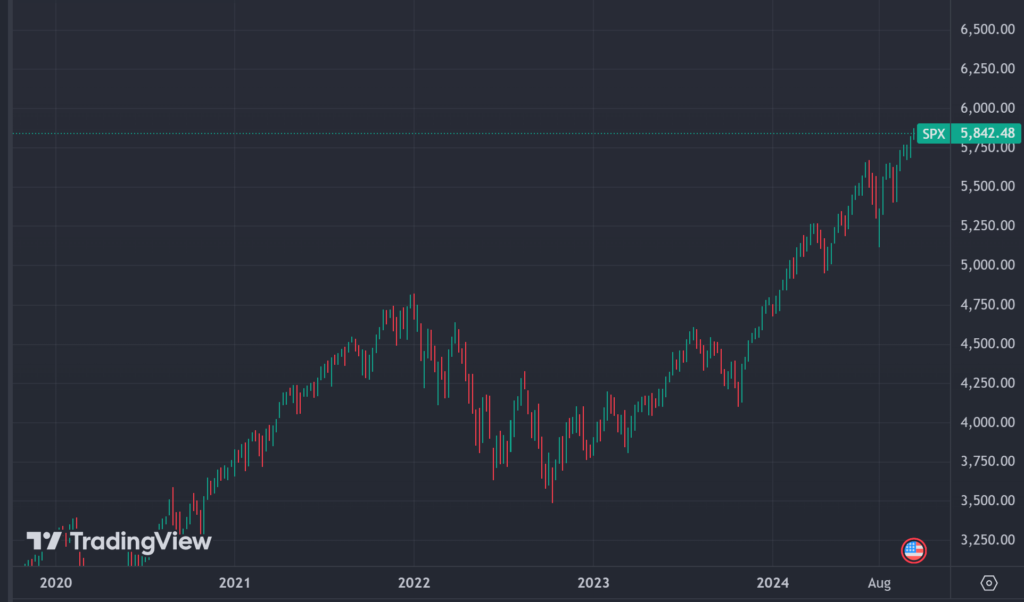The S&P 500 recently hit record highs, fueled by several factors driving investor sentiment and performance. Key among them were strong quarterly earnings from major banks like JPMorgan Chase, which exceeded expectations. These banks benefited from higher interest rates, boosting net interest income, despite rising deposit costs and slowing loan growth.
The Federal Reserve’s decision to pause further rate hikes and initiate a cut has reassured investors, raising hopes for economic stability. Optimism about AI-related growth has also contributed to the rally, with tech companies such as Oracle gaining momentum. As the technology sector continues to thrive, the market as a whole has surged, reflecting positive economic signals.
Given these developments, it may be time to reassess your portfolio. If you need liquidity or wish to invest in other opportunities, taking some profits might be a prudent choice.

As the chart shows, the S&P 500 has enjoyed a strong run. When compared to the 13 Oct 2022 bottom of 3,492, it boasts of a return of over 60%! While predicting future performance is challenging, how you respond to these market conditions can make all the difference.
Beware of Emotional Biases
When it comes to selling investments, emotions often cloud judgment. Fear of missing out (FOMO) can push investors to hold on too long, hoping for even higher returns. On the other hand, loss aversion makes it difficult to sell after losses, fearing regret if the market recovers. These emotional traps can lead to missed opportunities or unnecessary risks. A disciplined approach—like following a predetermined strategy—helps remove emotions from the equation, making it easier to decide when to take profits or rebalance your portfolio.
Three Strategies to Consider:
Make No Changes (High Risk)
Remain fully invested to take advantage of further market momentum. However, this approach carries the risk of being locked in if a correction occurs.Take Some Profits (Medium Risk)
Selling a portion—for example 50%—locks in gains while keeping some exposure to potential upside. If the market corrects, your downside risk is reduced since you’ve already secured part of your profits. With the profits, you can pamper yourself or your family, or reinvest in sectors that may benefit from rate cuts, such as REITs. This approach balances both potential growth and risk management.Take All Profits (Low Risk)
If you prefer the safest route, you could exit your position entirely and secure your gains. This removes the risk of exposure but also removes any future upside potential.
Be informed when a new post is available.
The Takeaway
Knowing when to sell is something I had personally struggled with. I held onto investments that were performing well, only to watch those gains evaporate during market corrections because I hesitated to act. Managing emotions is crucial—having a clear plan can help you avoid common pitfalls.
Which strategy aligns best with your financial goals? Will you stay fully invested, take partial profits, or exit entirely to lock in your gains? Whatever you choose, the key is to stay disciplined and follow a strategy that works for you.